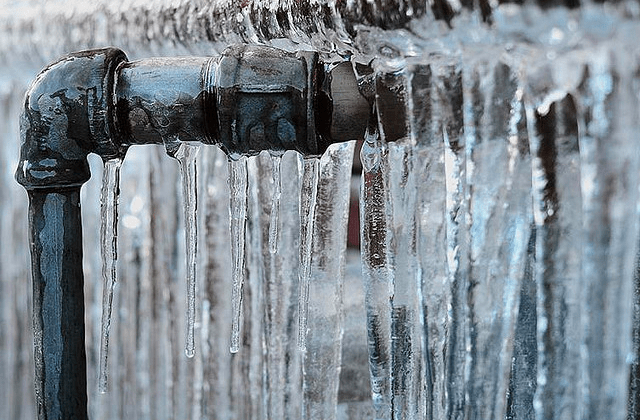Ways to Avoid Frozen Pipes in Cold Weather: Expert Guidance
Ways to Avoid Frozen Pipes in Cold Weather: Expert Guidance
Blog Article
The author is making a few great pointers regarding How to Prevent Your Pipes From Freezing overall in this great article in the next paragraphs.

Cold weather can ruin your plumbing, specifically by freezing pipes. Here's how to prevent it from occurring and what to do if it does.
Intro
As temperature levels decrease, the risk of icy pipes increases, potentially causing costly repairs and water damage. Comprehending exactly how to stop icy pipes is vital for property owners in cool environments.
Avoidance Tips
Insulating at risk pipes
Wrap pipelines in insulation sleeves or utilize warm tape to secure them from freezing temperatures. Focus on pipelines in unheated or outside locations of the home.
Heating techniques
Maintain interior rooms sufficiently heated, particularly areas with plumbing. Open up cupboard doors to enable warm air to flow around pipes under sinks.
How to recognize icy pipes
Try to find lowered water circulation from faucets, unusual odors or noises from pipes, and visible frost on revealed pipelines.
Long-Term Solutions
Structural adjustments
Consider rerouting pipes away from outside wall surfaces or unheated areas. Add added insulation to attics, cellars, and crawl spaces.
Upgrading insulation
Purchase high-quality insulation for pipelines, attics, and walls. Proper insulation aids preserve constant temperatures and decreases the danger of icy pipelines.
Shielding Exterior Plumbing
Yard hoses and outside taps
Detach and drain pipes garden tubes prior to winter season. Mount frost-proof spigots or cover outside faucets with shielded caps.
Comprehending Icy Pipelines
What triggers pipelines to ice up?
Pipelines ice up when subjected to temperature levels below 32 ° F (0 ° C) for extended durations. As water inside the pipelines freezes, it increases, putting pressure on the pipeline wall surfaces and possibly causing them to break.
Risks and damages
Icy pipes can lead to water system disruptions, residential or commercial property damages, and pricey repairs. Ruptured pipelines can flooding homes and cause considerable architectural damage.
Indicators of Frozen Water Lines
Determining icy pipes early can avoid them from bursting.
What to Do If Your Pipes Freeze
Immediate activities to take
If you presume icy pipelines, maintain faucets open up to relieve stress as the ice thaws. Use a hairdryer or towels taken in warm water to thaw pipes gradually.
Final thought
Preventing frozen pipelines needs aggressive steps and fast actions. By recognizing the causes, indications, and preventive measures, house owners can shield their pipes during cold weather.
6 Proven Ways to Prevent Frozen Pipes and Protect Your Home
Disconnect and Drain Garden Hoses
Before winter arrives, start by disconnecting your garden hoses and draining any remaining water. Close the shut-off valves that supply outdoor hose bibs and leave the outdoor faucet open to allow any residual water to drain. For extra protection, consider using faucet covers throughout the colder months. It’s also important to drain water from any sprinkler supply lines following the manufacturer’s directions.
Insulate Exposed Pipes
Insulating your pipes is an effective way to prevent freezing. Pipe insulation is readily available at home improvement stores and is relatively inexpensive. Pay close attention to pipes in unheated areas such as the attic, basement, crawl spaces, or garage. Apply foam insulation generously to create a buffer against the cold. You can also wrap your pipes in heat tape or thermostat-controlled heat cables for added warmth.
Seal Air Leaks
Inspect your home for any cracks or openings that could let in cold air. Seal any holes around the piping in interior or exterior walls, as well as the sill plates where your home rests on its foundation. Additionally, make sure to keep your garage door closed unless you’re entering or exiting. Leaving it open creates a significant air leak that can lead to frozen pipes.
Allow Warm Air Circulation
During cold snaps, it’s essential to allow warm air to circulate evenly throughout your home. Leave interior doors ajar to promote better airflow. Open kitchen and bathroom cabinets to help distribute heat consistently around the rooms. If you have small children or pets, be sure to remove any household chemicals or potentially harmful cleaners from open cabinets for safety.
Let Faucets Drip
A small trickle of water can make a big difference in preventing ice formation inside your pipes. When temperatures drop significantly, start a drip of water from all faucets served by exposed pipes. This continuous flow helps prevent the water from freezing. Additionally, running a few faucets slightly can relieve pressure inside the pipes, reducing the chances of a rupture if the water inside does freeze.
https://choateshvac.com/6-proven-ways-to-prevent-frozen-pipes-and-protect-your-home/

We were guided to that editorial about How To Avoid Freezing Pipes through someone on our other blog. Feel free to take the opportunity to share this write-up if you enjoyed reading it. Thanks for your time invested reading it.
Order Repair Report this page